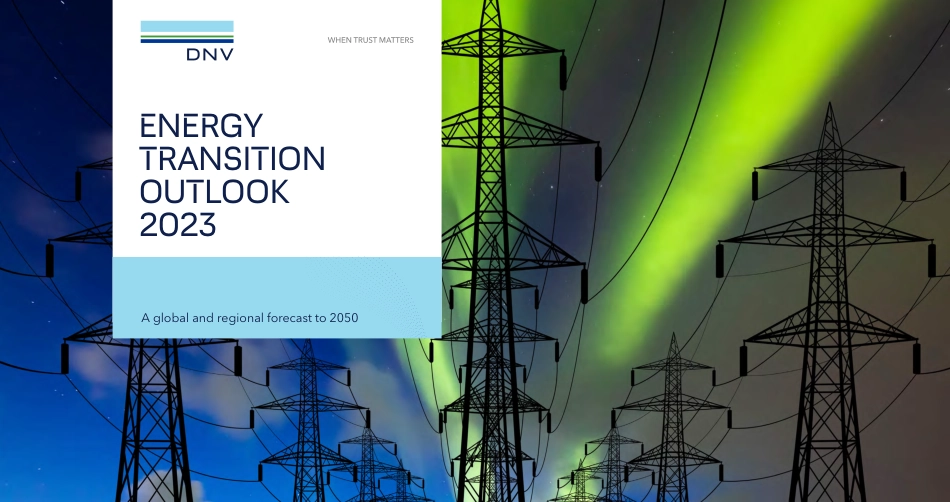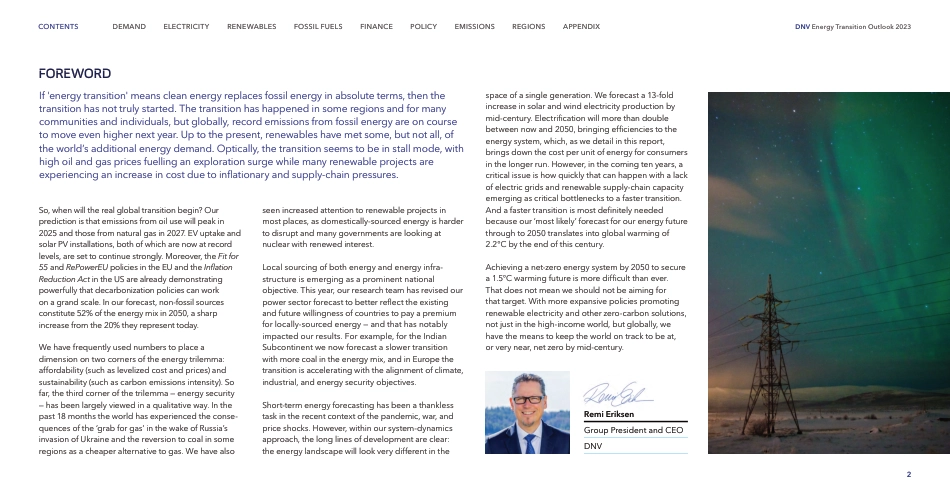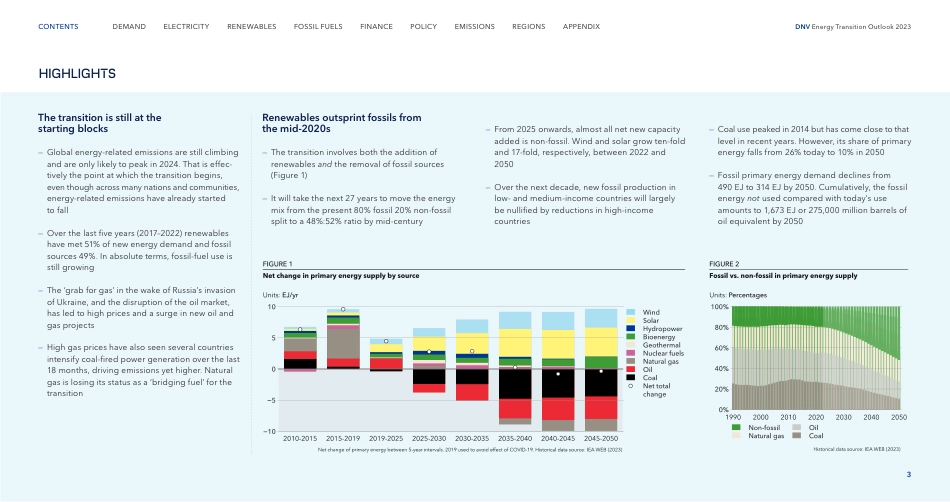CONTENTSFINANCEFOSSIL FUELSPOLICYEMISSIONSREGIONSAPPENDIXELECTRICITYRENEWABLESDEMANDENERGY TRANSITION OUTLOOK 2023A global and regional forecast to 2050Remi EriksenGroup President and CEO DNVFOREWORDSo, when will the real global transition begin? Our prediction is that emissions from oil use will peak in 2025 and those from natural gas in 2027. EV uptake and solar PV installations, both of which are now at record levels, are set to continue strongly. Moreover, the Fit for 55 and RePowerEU policies in the EU and the Inflation Reduction Act in the US are already demonstrating powerfully that decarbonization policies can work on a grand scale. In our forecast, non-fossil sources constitute 52% of the energy mix in 2050, a sharp increase from the 20% they represent today.We have frequently used numbers to place a dimension on two corners of the energy trilemma: affordability (such as levelized cost and prices) and sustainability (such as carbon emissions intensity). So far, the third corner of the trilemma — energy security — has been largely viewed in a qualitative way. In the past 18 months the world has experienced the conse-quences of the ‘grab for gas’ in the wake of Russia’s invasion of Ukraine and the reversion to coal in some regions as a cheaper alternative to gas. We have also seen increased attention to renewable projects in most places, as domestically-sourced energy is harder to disrupt and many governments are looking at nuclear with renewed interest.Local sourcing of both energy and energy infra-structure is emerging as a prominent national objective. This year, our research team has revised our power sector forecast to better reflect the existing and future willingness of countries to...



